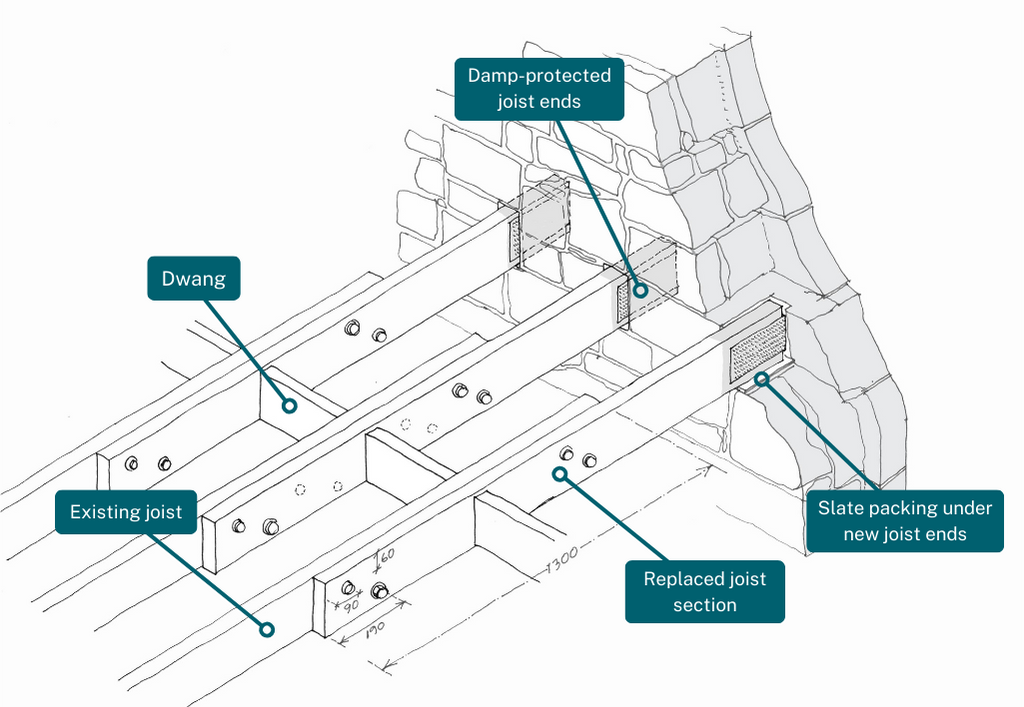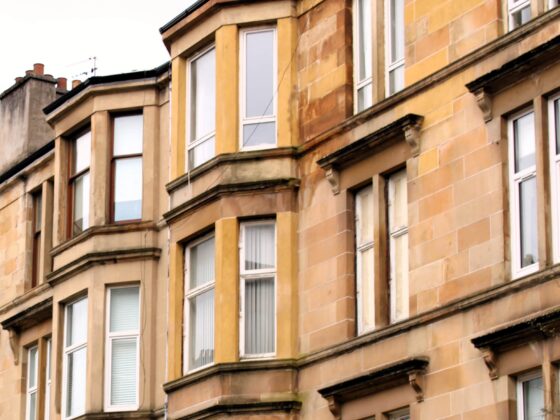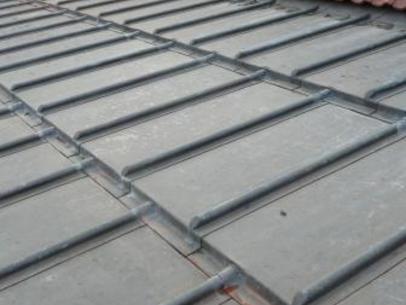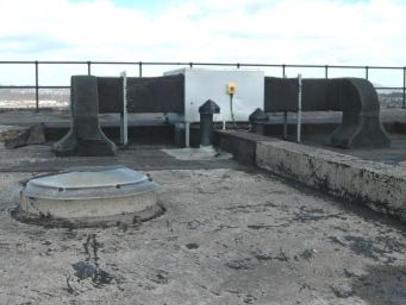Joists span from the front to the back of the building. Their main purpose is to support the floor, but they also have the important function of tying the walls together, giving structural stability to the building.
How joists are used
 Joist ends are inserted into the wall. They are an important part of the building’s structure.
Joist ends are inserted into the wall. They are an important part of the building’s structure.
Floors between flats are usually made from timber joists, which tie front and back walls together. Secondary support beams and internal load-bearing walls reduce the span.
On the ground floor, smaller joists are often used, resting on sleeper or dwarf walls.
The joists on the top floor are tied into the rafters which form the roof, along with additional strengthening timbers within the loft space.
Dwangs (known as ‘noggins’ in England) or herringbone struts are generally used to stiffen the joists. Some builders relied on the floorboards to achieve this bracing effect.
Floorboards are nailed to the joists. These are normally tongued and grooved, and often ‘secret nailed’ through the groove.
 Typical floor construction. Ceilings are fixed to the underside of the joists, floorboards to the top. Deafening boards support the sound insulation.
Typical floor construction. Ceilings are fixed to the underside of the joists, floorboards to the top. Deafening boards support the sound insulation.
Problems
Floor joists can be damaged by
- rot in the joist ends, caused by prolonged exposure to damp
- cutting of notches for pipes and wiring – large notches can reduce the strength of the joist
Ideally, cables and pipes should be led through holes drilled in the centre of joists. Notching of the joists can lead to squeaky floors.
If your floors are not level or if an area of flooring moves underfoot, or is bouncy, this may indicate rot in the joist ends. Failure to deal with rotten joists ends can lead to bulges in the front or back walls of your building.
 Rot in joist ends repaired three years previously. Demonstrates the importance of dealing with conditions that led to the rot outbreak. Image courtesy of McGill Consultancy Ltd.
Rot in joist ends repaired three years previously. Demonstrates the importance of dealing with conditions that led to the rot outbreak. Image courtesy of McGill Consultancy Ltd.
Replacing (splicing) joist ends
Typical joist splice detail
New splicing should be no more than one third of the overall joist span. The joist ends should be well damp-proofed. Wrapping in stainless steel mesh (expamet), dipping in bitumen, dusting with sand, and backfilling with lime mortar is a good specification to look for. If you are working with a structural engineer, they will specify the number of fixing bolts required.
Who pays?
Floor joists are an important part of the structure of your building, so major repairs to these should be treated as common repairs.
If an individual owner cuts into floor joists in such a way that the structural integrity of the floor joist is affected, then this individual will have breached their Duty to Maintain and could be considered individually liable for the cost of repairing.
Professional help recommended?
Although the work may appear straightforward, ensure your builder or tradespeople have the skills for the job. If in any doubt, get professional help to specify and organise the repair.
Further information





